The cupola at the Jungfraujoch high altitude research station. Photograph courtesy of Christopher Hoyle.
During my doctoral work I took part in campaign on top of the Jungfraujoch, a mountain in central Switzerland. There is a long-established high altitude research station on top of the mountain (sharing space with an exhibition and viewing platform for tourists). The station is useful for atmospheric research because, at least for part of the time, it is located above the boundary layer. The boundary layer is the part of the atmosphere directly influenced by the earth’s surface, reacting to it on the time scale of an hour or less. By looking above this we can see longer term trends and avoid short term influences of local sources of pollution.

The journey I made to work here was one I would have gladly done for pleasure. I left my home near Geneva, in the French speaking part of Switzerland, and took a train along the shore of the beautiful Lac Leman, looking across the waters to Mont Blanc in the French Alps. At the end of the lake the train turns and runs through rolling hills, more lakes and more mountains pulling into Interlaken. Here I changed to small local trains, which took me to the foot of the mountain and then up through the ski resort. The track is steep here and the views magnificent. Stepping out at the top of the ski resort the air is always shocking cold and you can feel the effect of the altitude on your breathing. But you’re not at the top yet. A funicular train takes you up further still, to a peak often hidden by clouds from those below.
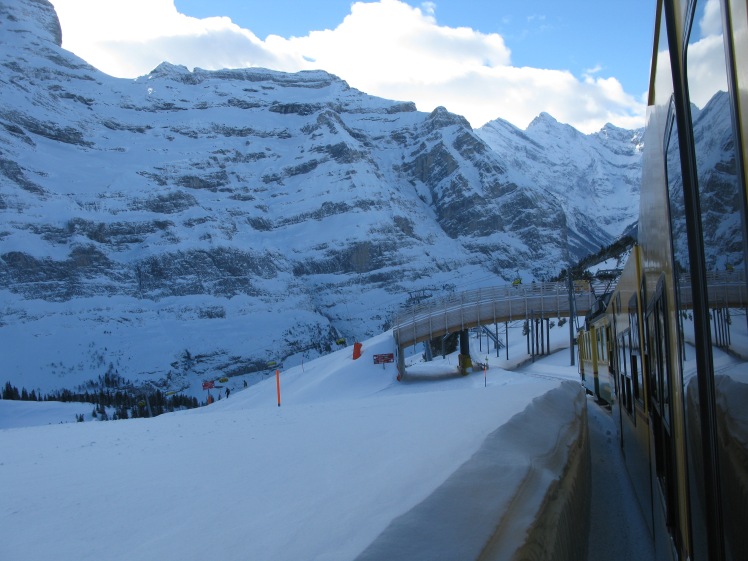

At the top I am met by a woman Joan, one of the custodians of the research station, and her dog. She leads me through the tunnels, and through a door in the rock to the place that is to be my home for the next few weeks. It feels remarkably homely, there’s a communal kitchen and dining/living room, and then a few small rooms with beds and desks where the researchers sleep. On one side there are windows looking onto the glacier and over to another peak, called Monk. Upstairs there’s a library with what must be one of the most incredible views one can have from any library in the world.
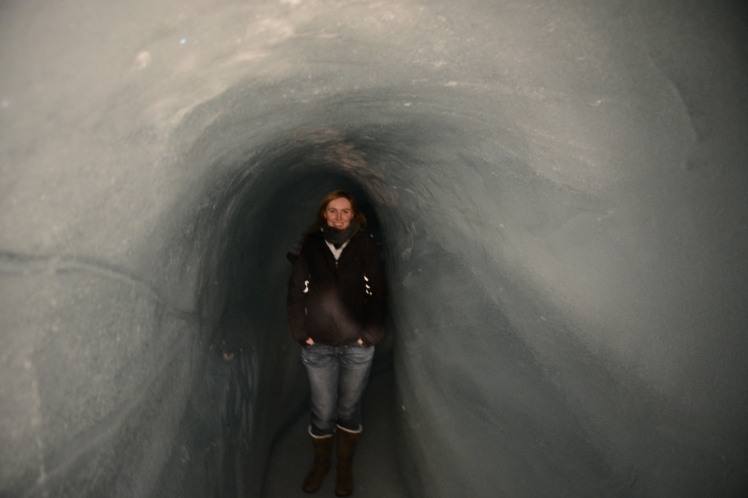 Yours truly walking through tunnels in the glacier. Photograph courtesy of Christopher Hoyle.
Yours truly walking through tunnels in the glacier. Photograph courtesy of Christopher Hoyle.

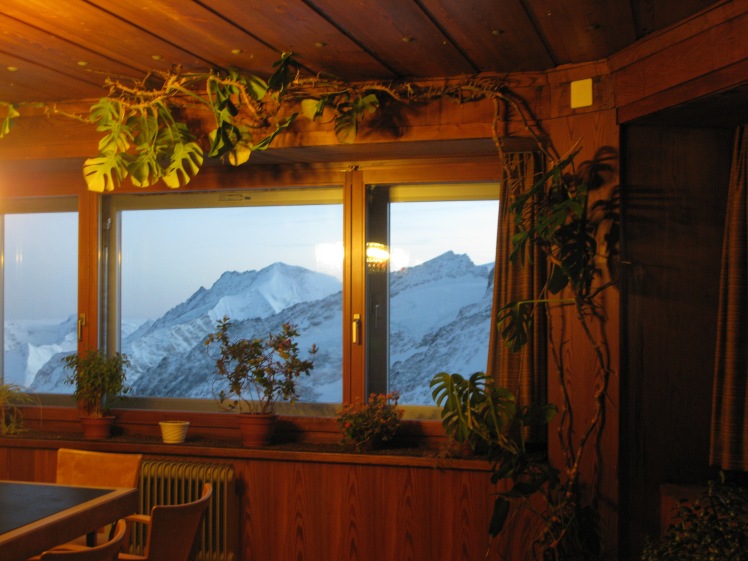
The first day most people feel ill from the fast change in altitude, and we all try to balance getting rest and hydration with setting up our instruments in the lab. I put my instruments up in the Cupola, a dome with a retracting roof designed for the telescope it houses. The telescope is not currently in use, and the main lab downstairs is full of other instruments, so I get to use this space. It’s -15C (5F) as I unpack my boxes and set up my instruments.
In the morning, after a storm blocks half my bedroom window with snow, I find that it has snowed inside the Cupola as the retracting roof doesn’t seal too well. I install my inlet (a tube poking out of a porthole in the dome to suck outside air into my instrument) and have to venture outside to clear icicles that form rapidly on the tube, and wrap it in a heating coil to try and prevent it getting blocked up with ice (my hands have no such luxury). The winds are so strong that I debate seeing if anyone has a climbing harness I can use to attach myself to the metal grid platform and railing that hangs over the edge of the mountain but decide as we’re below 100km/h (about 60mph) today, that would be overreacting.
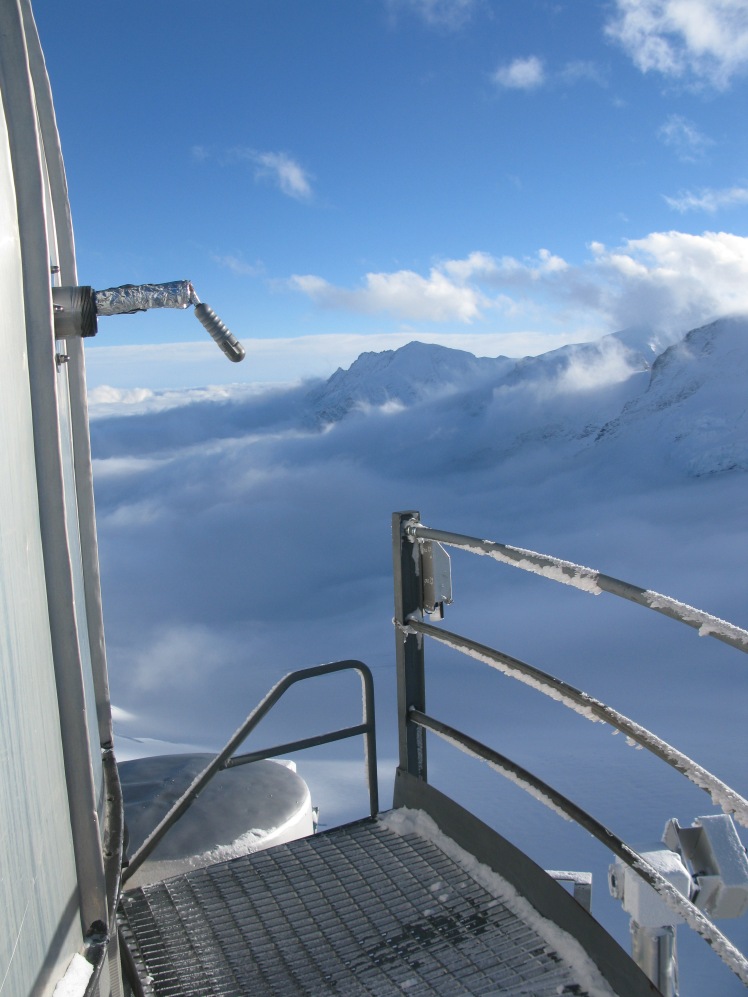
This may all sound a bit harrowing, but it was so exciting and awesome in the truest sense of the word to be surrounded by those views (when we weren’t actually inside the cloud) all day. We took turns sweeping the snow from the roof where some instruments stood outside each morning. It had to be done by 7am, which felt difficult pulling ourselves out of bed so early in the dark and heading into the bitter cold, but the the sun would rise as we were shoveling, and we felt like the luckiest people on earth.
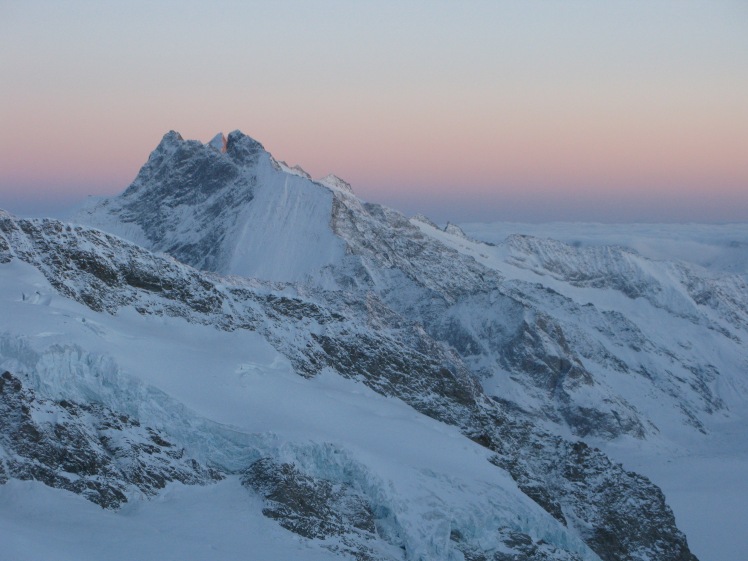

A British team came out one day and installed some instruments where geographical alignment was critical. We had so many scientific instruments up there that compasses were going crazy, but it was a clear night as they finished setting up, so they used the stars to find the correct direction and properly line up the instruments. I’ve never seen so many stars and planets as from up there. There’s very little light pollution and the atmosphere is thinner and drier, so it’s clearer to see them. Every clear evening I’d go and stand outside for as long as my body could bear the cold and just stare up at them. Then I’d retreat back to our cozy little dining room, make dinner and chat with other scientists (when you’re staying a few weeks in a place with only about 6 other inhabitants, and no real way to get away from each other, you form a pretty close community).
We’d often all sit round after dinner, either doing analysis on our laptops, discussing results or current affairs. One evening there was a power cut for a few hours as they fixed one of the large cables that comes up the tunnel with the trains. We got a couple of hours warning before it happened. So we secured everything in the labs and then made a big pot of fondue (a traditional Swiss dish of melted cheese and bread) that could be kept warm over candles, and then all ate it together in the dark during the power outage.
 Starscape from the Jungfraujoch station. Photograph courtesy of Christopher Hoyle.
Starscape from the Jungfraujoch station. Photograph courtesy of Christopher Hoyle.
We were researching new particle formation in the free troposphere while I was at the Jungfraujoch. This is a phenomenon where liquid or solid particles are formed directly in the atmosphere from the gas phase (for a fuller explanation see here). I took up some condensation particle counters, which count how many of the smallest particles there are in the air being sampled by condensing vapor onto them (much like how your breath condenses water onto particles in the air on a cold morning, so that you can suddenly see them) and then scattering light from a laser off them and counting them from how the light is scattered.
Other people were measuring the chemical composition of the particles and the air around them and the size of the particles. With all these instruments we were able to see when new particles were forming and get information about the processes causing this. We’ll be publishing the results in a paper soon.
 View from the Jungfraujoch research station. Photograph courtesy of Christopher Hoyle.
View from the Jungfraujoch research station. Photograph courtesy of Christopher Hoyle.
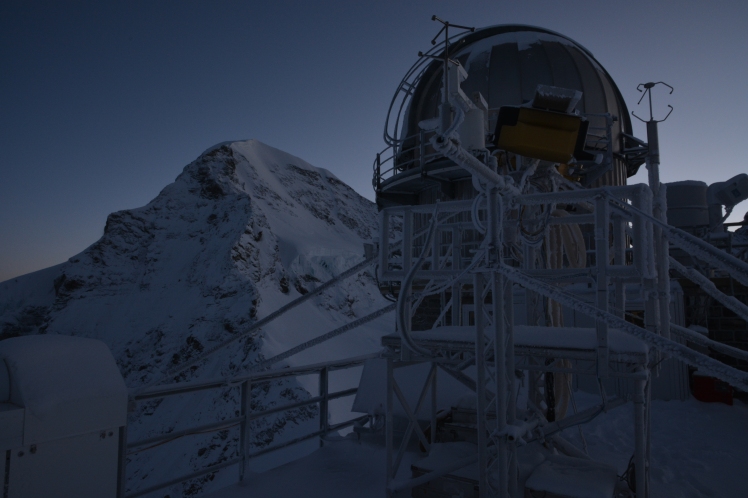
3 thoughts on “Research from mountaintops”